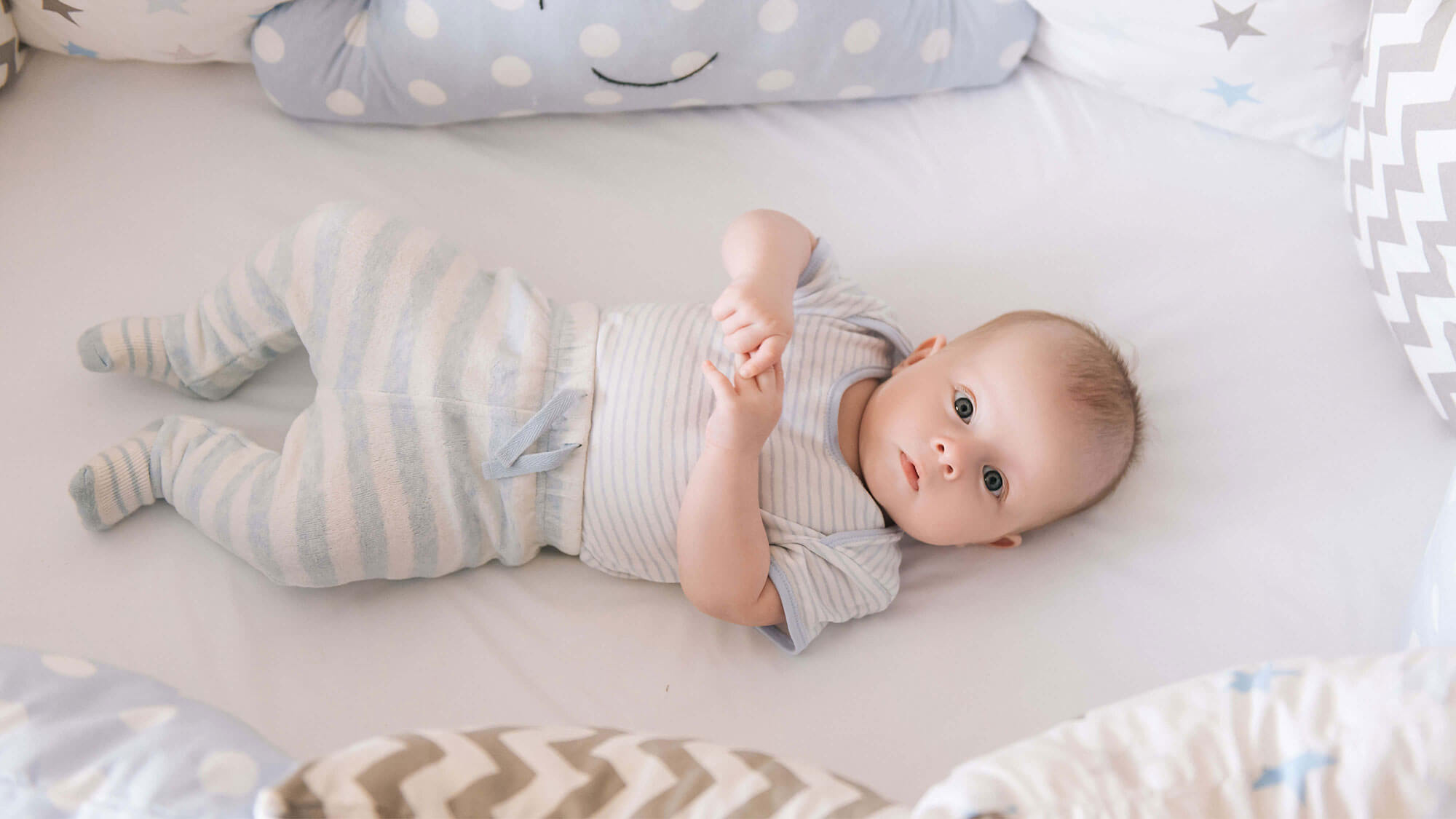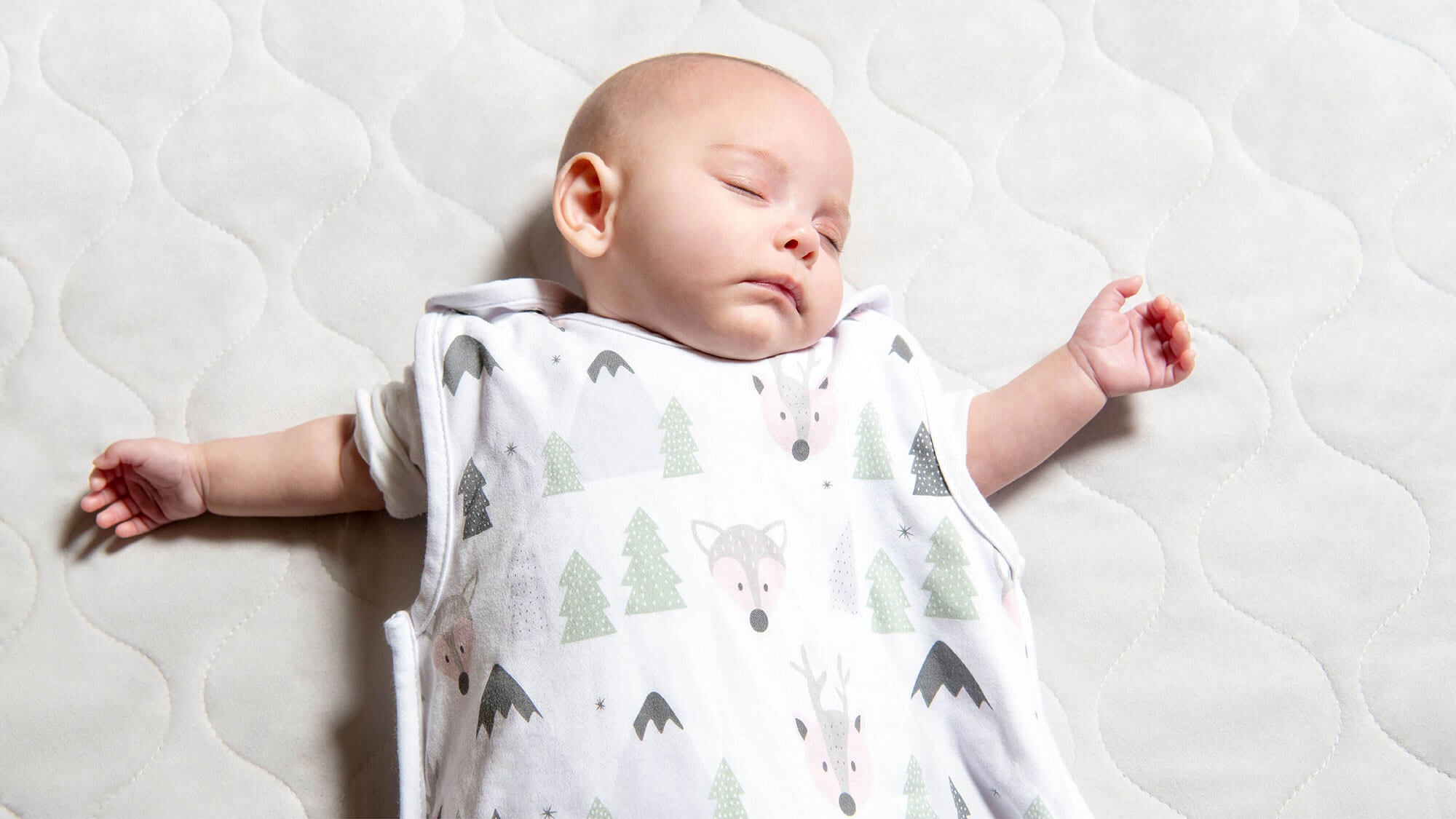Cot bumpers, with their soft, padded design, may seem like a beautiful addition to your baby’s cot. They come in various styles, from classic fabric bumpers to modern mesh designs, and are often marketed as a way to protect your baby from bumps and injuries. However, the most important question to ask is: Are cot bumpers safe?
In this article, we’ll explore what cot bumpers are, why they were created, and why experts now advise against using them in your baby's cot. We'll also look at safer alternatives to keep your baby protected without compromising their safety.

What Are Cot Bumpers?
Cot bumpers are soft, padded liners that are attached to the inside edges of a cot. Historically, cot bumpers were developed to prevent babies from getting their heads stuck between the slats of older-style cots. However, modern cots are built with smaller gaps between the slats, adhering to strict safety regulations, which makes the original purpose of cot bumpers redundant.
Today, parents may still choose cot bumpers for aesthetic reasons or in the belief that they will protect their baby from hitting their head or limbs on the sides of the cot. However, this perceived benefit is outweighed by the potential risks associated with using cot bumpers.
Why Are Cot Bumpers Unsafe?
Over the years, research has shown that cot bumpers pose a significant risk to infants. In 2007, a study published in The Journal of Paediatrics concluded that traditional cot bumpers are unsafe. A more recent study by Washington University School of Medicine in 2015 reinforced these findings, highlighting the dangers of suffocation, strangulation, and entrapment caused by cot bumpers. Following this, The Lullaby Trust in the UK released a statement advising parents against using any type of cot bumpers, citing them as a serious safety risk.
Here are the main reasons cot bumpers are considered unsafe:
1. Risk of Suffocation
Cot bumpers, especially traditional padded ones, are not breathable. If a baby’s face becomes pressed against the bumper, they may struggle to breathe, increasing the risk of suffocation. Even mesh bumpers, which are marketed as “breathable,” can pose a risk if they come loose or become entangled around the baby.
2. Increased Risk of Overheating
Cot bumpers can obstruct airflow inside the cot, which may cause the temperature to rise. Overheating is a known risk factor for Sudden Infant Death Syndrome (SIDS), making it crucial to ensure your baby’s cot remains well-ventilated.
3. Strangulation Hazards
Many cot bumpers are attached to the cot with fabric ties or strings. As your baby starts to move more, there is a risk that these ties could become loose, posing a potential strangulation hazard if your baby becomes entangled.
4. Climbing Risk
As babies grow and develop, they become more mobile. Older babies and toddlers may use cot bumpers as leverage to climb out of the cot, increasing the risk of falling and injury.
Do ‘Breathable’ Cot Bumpers Make a Difference?
While some companies market "breathable" cot bumpers as a safer alternative, they still pose risks. Breathable bumpers can come loose and fall into the cot, presenting a suffocation hazard. They also do not eliminate the risks of climbing, entanglement, or obstructing airflow.
Safer Alternatives to Cot Bumpers
There are safer ways to ensure your baby’s comfort without using cot bumpers. Here are some alternatives that can offer peace of mind while keeping your baby safe:
1. Baby Sleeping Bags
A baby sleeping bag is a safer and more practical alternative to cot bumpers. It keeps your baby warm without the need for loose blankets or bumpers. Sleeping bags come in various thicknesses (measured in togs) to suit different seasons and room temperatures. They allow your baby to move their legs freely while keeping them secure.
2. Cot Positioning
If you’re concerned about your baby bumping their head or limbs on the sides of the cot, consider placing the cot away from walls or other hard surfaces to minimise injury risk. Additionally, most babies tend to adjust and learn to navigate their cot space as they grow, reducing the need for any padding over time.
Expert Advice on Safer Sleep
The best way to ensure your baby’s safety is to follow the advice of sleep experts, such as The Lullaby Trust and NHS. Their recommendations are based on extensive research and are designed to minimise risks associated with SIDS and other sleep-related dangers. Key safety tips include:
- Always place your baby on their back to sleep.
- Use a firm, flat mattress with no loose bedding, pillows, or bumpers.
- Ensure your baby’s sleep space is free from soft toys, loose blankets, or any other potential hazards.
- Avoid overheating—keep the room at a comfortable temperature and dress your baby appropriately for sleep.
Final Thoughts
While cot bumpers may be marketed as decorative or protective, they pose more risks than benefits. Leading safety organisations, including The Lullaby Trust and NHS, strongly advise against using cot bumpers due to the dangers of suffocation, overheating, and strangulation.
For your baby’s safety, it’s best to avoid cot bumpers altogether. Instead, choose safer alternatives such as a baby sleeping bag, which can offer comfort and protection without the associated risks. Always follow the latest expert guidelines on safe sleep to provide your baby with the safest sleeping environment possible.
For further information on how to create a safe sleep space for your baby, take a look at our blog on Safer Sleep for Babies, and always stay informed with up-to-date advice from trusted organisations like The Lullaby Trust.
Key Takeaways:
- Cot bumpers pose significant safety risks, including suffocation, overheating, and strangulation.
- 'Breathable' cot bumpers are not a safer alternative.
- Opt for safer alternatives like baby sleeping bags and follow expert guidelines for safe sleep.
Have questions? Don’t hesitate to contact us. Our team is always available to answer any questions.








